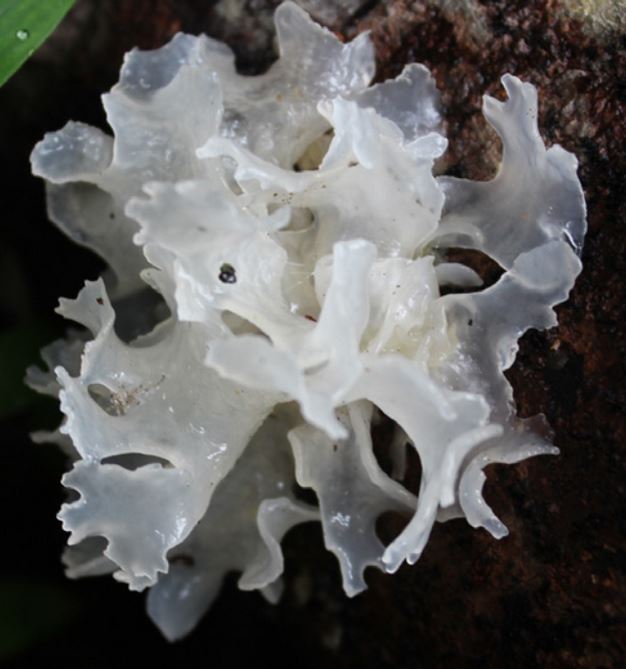Five reasons why you want to use Tremella on your skin
Tremella is a great example of symbiosis. It is also a great example of how important fungal components have become in skincare.
Figure: the snow fungus is more than “just” a fungus.
Let me first remind you of what symbiosis is. The word comes from Greek συμβίωσις, symbíōsis, “living together”, from σύν, sýn, “together”, and βίωσις, bíōsis, “living”. It refers to any close, long-term biological interaction between two different biological organisms. The organisms, each termed a symbiont, must be of different species.
How does it apply to the pretty “snow fungus”? Tremella fuciformis is a parasitic yeast that grows as a slimy film until it encounters its preferred hosts, also a fungus like Annulohypoxylon archeri. The yeast invades, triggering the fast growth required to form the fruiting bodies found on decaying wood, three components in total. This three-species “organism” can be cultivated on fallen wood if the two species of fungus are inoculated together.
Tremella benefits your skin:
- Prevents oxidative damage by UVA and photoaging
- Prevents collagen breakdown by proteases.
- Gels will help retain moisture when applied to the skin
- Anti-inflammatory activity
- Modulation of the immune response.
Read more about Tremella here
References
Shen, T., Duan, C., Chen, B., Li, M., Ruan, Y., Xu, D., … Wang, C. (2017). Tremella fuciformis polysaccharide suppresses hydrogen peroxide-triggered injury of human skin fibroblasts via upregulation of SIRT1. Molecular Medicine Reports, 16: 1340–1346. doi:10.3892/mmr.2017.6754
Han CK, Chiang HC, Lin CY, Tang CH, Lee H, Huang DD, Zeng YR, Chuang TN and Huang YL (2015) Comparison of immunomodulatory and anticancer activities in different strains of Tremella fuciformis berk. Am J Chin Med. 43:1637–1655.
Lingrong Wen, Qing Gao, Chung-wah Ma, Yazhong Ge, Lijun You, Rui Hai Liu, Xiong Fu, Dong Liu. (2016) Effect of polysaccharides from Tremella fuciformis on UV-induced photoaging,
Journal of Functional Foods, 20: 400-410.
